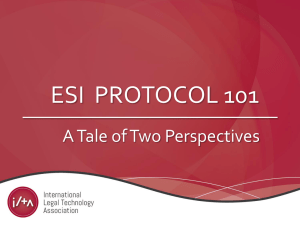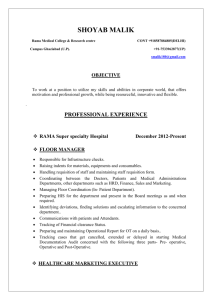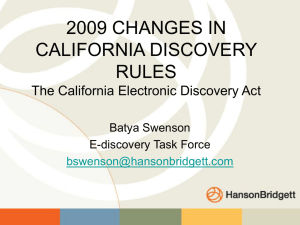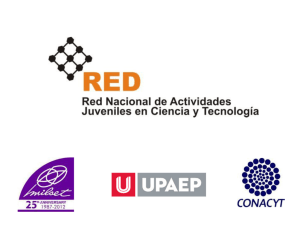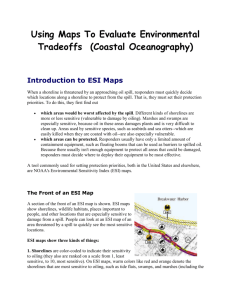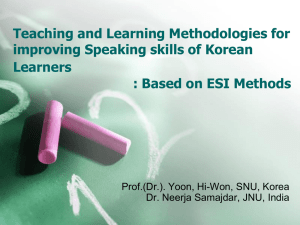Essential Skills Inventory - Early Learning Foundation
advertisement
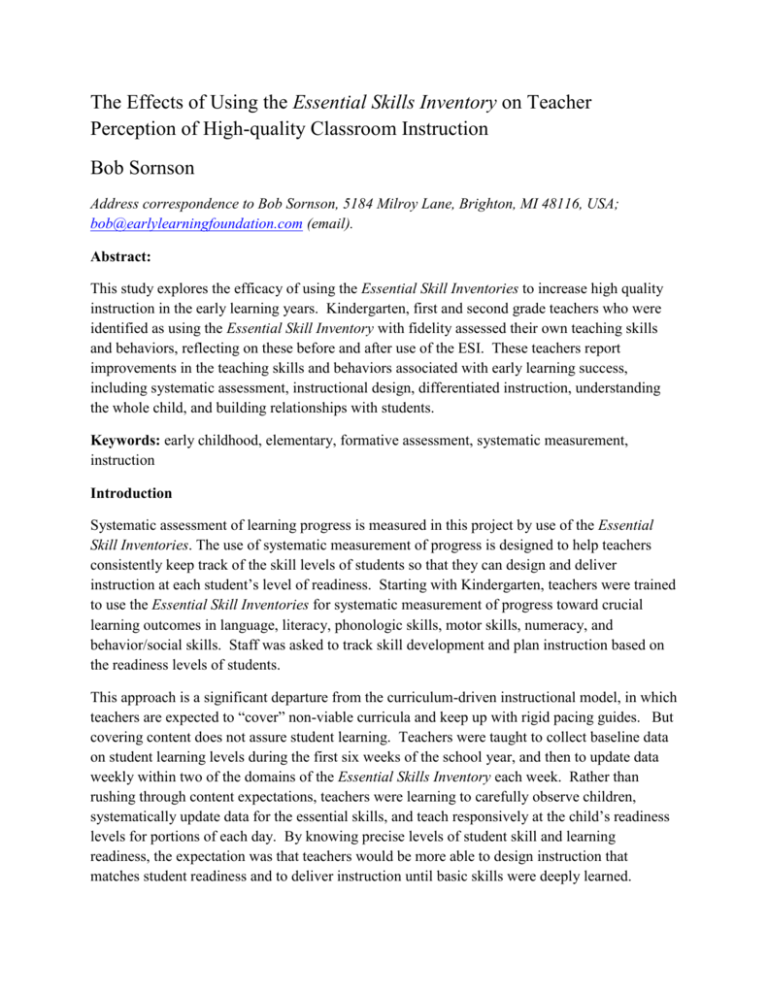
The Effects of Using the Essential Skills Inventory on Teacher Perception of High-quality Classroom Instruction Bob Sornson Address correspondence to Bob Sornson, 5184 Milroy Lane, Brighton, MI 48116, USA; bob@earlylearningfoundation.com (email). Abstract: This study explores the efficacy of using the Essential Skill Inventories to increase high quality instruction in the early learning years. Kindergarten, first and second grade teachers who were identified as using the Essential Skill Inventory with fidelity assessed their own teaching skills and behaviors, reflecting on these before and after use of the ESI. These teachers report improvements in the teaching skills and behaviors associated with early learning success, including systematic assessment, instructional design, differentiated instruction, understanding the whole child, and building relationships with students. Keywords: early childhood, elementary, formative assessment, systematic measurement, instruction Introduction Systematic assessment of learning progress is measured in this project by use of the Essential Skill Inventories. The use of systematic measurement of progress is designed to help teachers consistently keep track of the skill levels of students so that they can design and deliver instruction at each student’s level of readiness. Starting with Kindergarten, teachers were trained to use the Essential Skill Inventories for systematic measurement of progress toward crucial learning outcomes in language, literacy, phonologic skills, motor skills, numeracy, and behavior/social skills. Staff was asked to track skill development and plan instruction based on the readiness levels of students. This approach is a significant departure from the curriculum-driven instructional model, in which teachers are expected to “cover” non-viable curricula and keep up with rigid pacing guides. But covering content does not assure student learning. Teachers were taught to collect baseline data on student learning levels during the first six weeks of the school year, and then to update data weekly within two of the domains of the Essential Skills Inventory each week. Rather than rushing through content expectations, teachers were learning to carefully observe children, systematically update data for the essential skills, and teach responsively at the child’s readiness levels for portions of each day. By knowing precise levels of student skill and learning readiness, the expectation was that teachers would be more able to design instruction that matches student readiness and to deliver instruction until basic skills were deeply learned. High quality teaching has been consistently identified as the most important school-based factor in student achievement (Rowan, Correnti & Miller, 2002; Wright, Horn, & Sanders, 1997), and teacher effects on student learning have been found to be cumulative and long-lasting (Kain, 1998; McCaffrey et al., 2003; Rivers, 1999; Sanders & Rivers, 1996). While this study does not attempt to objectively measure teacher skills or overall instructional quality, it addresses the teacher’s perception of her/his own teaching skills and behaviors, focusing specifically on changes in skills and behaviors since learning to use systematic assessment and following the Essential Skill Inventory protocol with fidelity. Teachers were selected to participate in the survey by their principals, based on the teacher’s use of the ESI with fidelity to the protocol. Student learning outcomes based on this systematic measurement and responsive instruction are addressed in other studies. Methodology: Thirty-one kindergarten, first, and second grade teachers from Simpson County, Mississippi and Wayne County, Michigan were considered by their principals to be using the Essential Skills Inventory with fidelity to the process, which includes updating measures of progress in at least two domains each week after the baseline data collection was complete. The schools included in the study have been part of a long-term early learning success initiative, in which they have received training in using the ESI for systematic measurement of progress. Teachers who assessed two or more skills in each of two domains weekly, or who were able to observe and update skill data in more than two domains were considered to be using the ESI with fidelity. These teachers self-assessed their changes in instructional practice from before using the inventory compared to instruction while using the ESI with fidelity. The survey was given at the end of the 2012-13 school-year. Teachers were asked to reflect on a series of 25 questions which describe their instructional behaviors and skills. Two surveys were incomplete, and this data was excluded from the results. The Essential Skill Inventories are a systematic measure of progress toward thirty to thirty-three essential outcomes during each of the K-3 years. Teachers are taught to collect baseline data during the first six weeks of the school year, and then update two domains weekly while using this information to help them plan and deliver instruction. The protocol for using the ESI includes: • • During the first 4 to 6 weeks of school, use observational, informal, and instructional assessment to collect baseline data. Using the rubric provided, determine which students have already developed proficiency in an essential skill, and which students may need intensive support. Note proficiency by writing the date. Student proficiency is noted only after the student has demonstrated this skill at the proficient level on several occasions and in different uses or contexts. You may wish to devise a system to remind you of the times when proficient skills were noticed. Some teachers use dots (in pencil) on the inventory to note • • • • • • these observations. Exceptions can be made to the rule of several observations during baseline data collection, but only when teachers use careful observational assessments and are certain a skill is highly proficient. Use the data regarding student skills and needs to plan instruction. Refer to this information as you formulate weekly or daily lesson plans. With the knowledge of which students are proficient, developing or need intensive support teachers can design groups, centers, and activities to meet the specific needs of your students. Update two domains/sections of the Essential Skills Inventory each week. Typically there are 7 or 8 major sections on each grade level inventory. At least two (i.e. Language and Reading) should be updated in a week. Update your assessment of two or more skills within each section. The consistent practice of updating formative assessment data is necessary for responsive instruction. The principal will meet with grade level teachers or individual teachers monthly to review the progress of students. These monthly data review meetings are important for building the routine of formative assessment and responsive instruction. Data from the Essential Skill Inventory will be considered when making referrals to the school’s Support Team. Individual student data can be used for communication with parents. The rubric allows teachers to rate student skills as Intervention, Developing, or Proficient. Teachers can ask parents to support the development of crucial skills. Classroom data is never be used for individual discussions. Principals selected teachers who demonstrated fidelity in following the protocol for use of the Essential Skills Inventory and asked them to take the survey, which is a selfassessment of teacher behaviors and skills. Teachers who assessed two or more skills in each of two domains weekly, or who were able to observe and update skill data in more than two domains in a week were considered to be using the ESI with fidelity. Principals made the selections based on conversations and observations of staff. Using the Essential Skill Inventory with fidelity is associated with scoring a 4 or 5 on the following rubric: o o o o o 1. Not able to find time to get it done 2. Had a good plan for assessment but it did not work out 3. Assessed at least one skill in each of the two segments 4. Assessed two or more skills in each of the two segments 5. Planned assessment for two or more segments, but was able to observe and update data in other skill segments in addition to those planned Not all teachers quickly adjust to using the inventory with fidelity. Some teachers have difficulty adapting to the expectation that they will systematically measure student learning outcomes. They may feel overwhelmed by the need to cover content expectations, or be unfamiliar with methods for observation and assessment of progress, or be distracted by behavior and other challenges in the classroom. Teachers selected for the survey had a range of experience using the Essential Skills Inventory. Some were using the inventory for their first year, and others were in their third year of implementation. Data were collected from MacGowan Elementary and Brown Elementary in Michigan and from Simpson County Central and Magee Elementary in Mississippi. In the survey teachers were asked to reflect, using a five point scale, how accurate each statement was both before and after they learned to use the Essential Skill Inventory with fidelity. Table 1: Summary of Results of All Survey Questions Survey Statement 1. I clearly understand why students need each Essential Skill 2. I understand the relationship between developmental domains 3. I understand each student’s unique learning needs 4. I track each student’s learning progress 5. I use observational assessment to track student progress 6. I embed assessment into my design of instruction 7. I can assess more than one skill at a time 8. I carefully observe children and consider progress every day 9. I update at least two segments (domains) each week 10. Knowing my students allows me to design instruction well 11. Knowing my students allows me to build better relationships 12. Knowing my students allows me to work well with parents 13. I match instruction to each student’s readiness level 14. I give some students more time to learn essential skills 15. I reteach essential skills until students reach deep understanding 16. I use center-based instruction effectively 17. I use small group instruction effectively 18. I use learning buddies or peer-instruction effectively 19. I differentiate instruction effectively 20. My principal reviews student progress with me monthly 21. My grade-level colleagues share instruction strategies Before ESI 2.1 After ESI 4.5 Change 2.4 2.25 4.4 2.15 3.1 4.7 1.6 3 3.1 4.7 4.7 1.7 1.6 2.4 4.7 2.3 2.7 2.8 4.6 4.6 1.9 1.8 2 4.6 2.6 3 4.8 1.8 3.4 4.7 1.3 3.3 4.6 1.3 2.7 4.7 2.0 2.3 4.7 2.4 2.1 4.7 2.6 2.8 2.9 2.6 4.6 4.7 4.4 1.8 1.8 1.8 2.8 2.3 4.7 4.7 1.9 2.4 2.8 4.6 1.8 22. My grade-level colleagues share assessment strategies 23. I consider student skills and progress as I plan instruction 24. I move students to more advanced levels of learning asap 25. Students are building the solid foundation skills they need 3.3 4.5 1.2 3 4.7 1.7 2.8 4.6 1.8 3 4.4 1.4 These results allow for an analysis of sub-groups of teaching behaviors that are important for early learning success, including systematic assessment, instructional design, differentiated instruction, and understanding the whole child. The following improvements in teacher skills and behaviors associated with systematic assessment were reported: Table 2: Systematic Assessment Survey Questions Survey Statement 4. I track each student’s learning progress 5. I use observational assessment to track student progress 6. I embed assessment into my design of instruction 7. I can assess more than one skill at a time Before ESI 3 3.1 After ESI 4.7 4.7 Change 1.7 1.6 2.4 4.7 2.3 2.7 4.6 1.9 The following improvements in teacher skills and behaviors associated with instructional design were reported: Table 3: Instructional Design Survey Questions Survey Statement Before ESI After ESI Change 10. Knowing my students allows me to design instruction well 13. I match instruction to each student’s readiness level 14. I give some students more time to learn essential skills 15. I reteach essential skills until students reach deep understanding 23. I consider student skills and progress as I plan instruction 3 4.8 1.8 2.7 4.7 2.0 2.3 4.7 2.4 2.1 4.7 2.6 3 4.7 1.7 The following improvements in teacher skills and behaviors associated with differentiated instruction were reported: Table 4: Differentiated Instruction Survey Questions Survey Statement 16. I use center-based instruction effectively 17. I use small group instruction effectively 18. I use learning buddies or peer-instruction effectively 19. I differentiate instruction effectively 24. I move students to more advanced levels of learning asap Before ESI 2.8 2.9 2.6 After ESI 4.6 4.7 4.4 Change 1.8 1.8 1.8 2.8 2.8 4.7 4.6 1.9 1.8 The following improvements in teacher skills associated with understanding the whole child were reported: Table 5: Understanding the Whole Child Survey Questions Survey Statement Before ESI After ESI Change 1. I clearly understand why students need each Essential Skill 2. I understand the relationship between developmental domains 3. I understand each student’s unique learning needs 2.1 4.5 2.4 2.25 4.4 2.15 3.1 4.7 1.6 Discussion: The teachers identified as using the Essential Skill Inventories (K-3) with fidelity report key improvements in teaching skills and behaviors associated with early learning success, including systematic assessment, instructional design, differentiated instruction, understanding the whole child, and building relationships with students. Systematic Measurement of Progress Teachers described improvements in their skills and behaviors supporting systematic assessment, with the largest gain reported in their ability to embed assessment into the design of instruction. Over the last few decades, many school districts have used learning programs with a standardized instructional design which discouraged teachers from varying instruction based on the response of the students. Teachers were expected to teach a lesson, give the test, give grades, and continue to the next unit or lesson. With non-viable curriculum expectations, and without clear expectations for essential learning outcomes, instruction became a race in which taking time to carefully measure each student’s learning for the purpose of adapting instruction was not a priority. Many teachers in this project reported that they have had to learn or relearn how to use observational assessment and to embed assessment into the design of instruction. According to the Essential Skill Inventory protocol, teachers are expected to update at least two skills within two domains of the inventory each week. For example, a Kindergarten teacher might update the Language and Phonologic Skills domains in week one, the Shapes, Visual, and Literacy domains in week two, Letters and Motor Skills in week three, and Numeracy and Behavior in week four . Within each domain teachers are expected to update a set of skills, noting if students are still in the intervention category, or if they are now in the developing category, or if observations of proficiency have been made. To do this skillfully teachers will learn to embed assessment into the design of instruction. Rather than evaluating only one child at a time, they will design instructional activities which allow them to observe both the child at work and the outcome of a learning task. Some children will demonstrate a skill early in the year. At the Kindergarten level, Identifies upper case letters is an easily assessable skill. Some children will take several months or even the entire year to develop this skill, but deserve to have time on task learning this skill until it is proficient. Some skills are unlikely to be learned before students reach this grade. Recognizes number groups without counting (2-10) is an example. This skill is a good example of a skill which is highly correlated to later math success, but often “covered” without all students reaching deep understanding. By following the protocol teachers will know exactly which students have demonstrated proficiency and which students need continuing practice. Figure 1: Use of ESI with Fidelity/ Effect on Systematic Measurement of Progress 0 1 2 3 4 5 Before ESI 4. I track each student’s learning progress 5. I use observational assessment to track student progress 6. I embed assessment into my design of instruction 7. I can assess more than one skill at a time After ESI Teacher comments: I like that we update two sections each week. It helps me keep those skills in mind as I plan and teach. Assessing them and tracking their progress allowed me to better plan group activities to match the students’ instructional levels. I like being able to track the students’ success. High Quality Instructional Design Teachers described significant improvements in their skills and behaviors supporting high quality instructional design, with the largest gains reported in giving some students more time to learn essential skills and re-teaching essential skills until students reach deep understanding. Scripted and rigidly paced instruction usually does not allow sufficient time for re-teaching, or for the additional learning time or practice time some students need to develop deep understanding of essential content or skills. By using a viable curriculum and clarifying crucial learning outcomes, teachers give priority to ensuring a deeper level of understanding. By knowing which students have an essential skill and which do not, teachers are able to plan instruction which specifically meets the needs of their students. Teaching lessons to a group of students with diverse levels of skill is always challenging. With the essential skill data, teachers are able to identify groups of students ready to advance, students who need practice time, and students who need more intense instruction or skill development. Knowing the skill levels of students allows teachers to apply the principle of instructional match to their lesson design, offering students a little bit of challenge, but avoiding so much challenge that they are pushed into the frustration zone. Figure 2: Use of ESI with Fidelity/ Effect on High Quality Instructional Design 0 1 2 3 4 5 6 10. Knowing my students allows me to design instruction well 13. I match instruction to each student’s readiness level 14. I give some students more time to learn essential skills 15. I reteach essential skills until students reach deep understanding 23. I consider student skills and progress as I plan instruction Before ESI After ESI Teacher comments: I was amazed how ESI transformed my small group instruction time. I felt like I was really meeting the needs of my students by providing intensive instruction at their levels. After working with ESI we have more children leaving kindergarten working above expectations. He made tremendous progress working on his instructional level rather than sitting in class with instruction he didn’t understand. Differentiated Instruction Teachers described significant improvements in their skills and behaviors supporting differentiated instruction, with an almost two point improvement on all measures. Having the data which comes from systematic measurement of progress supported the need to try new strategies if a student had not yet responded to instruction by developing skill proficiency. Teachers reported using a more diverse set of strategies to achieve student learning outcomes. Using the Essential Skill Inventories, teachers are constantly reminded that not all children have the same skills or the same learning readiness. Whole class instruction is appropriate for many things, but some essential skills require differentiated instruction or practice time. When a child learns in Kindergarten to have one-to-one correspondence for numbers 1-30, she becomes ready for more advanced counting tasks. A child without one-to-one correspondence will continue to need practice with basic counting using movement or manipulative. With self-collected data in front of them, teachers report responding to these variations by improving differentiated instruction. Figure 3: Use of ESI with Fidelity/ Effect on Differentiated Instruction 0 1 2 3 4 5 Before ESI 16. I use center-based instruction effectively 17. I use small group instruction effectively 18. I use learning buddies or peerinstruction effectively 19. I differentiate instruction effectively 24. I move students to more advanced levels of learning asap After ESI Teacher comments: I have effectively moved to more center based instruction that helps me differentiate learning. I was able to push the higher students where they were also having success. Understanding the Whole Child Teachers described significant improvements in their ability to understand the whole child. The largest gains were in understanding why students need each essential skill, and in the relationship between the developmental domains. While understanding and teaching the whole child are among the educational jargon often used in educational discussions, the prevailing teaching systems usually leave little time for understanding how language, motor skills, social skills, and academic development are inter-connected. With self-collected data in front of them each day, teachers notice the complex variations in development and also the patterns of development in their classroom. For example, many teachers have noticed in Kindergarten that a delay in phonologic skill development often corresponds with slowly developing language skills. Children with poor balance and bilateral motor skills often have difficulty with visual motor tasks. This awareness supports a deeper empathy and understanding as teachers plan instruction and support learning in the classroom. Figure 4: Use of ESI with Fidelity/ Effect on Understanding the Whole Child 0 1 2 3 4 5 Before ESI 1. I clearly understand why students need each Essential Skill After ESI 2. I understand the relationship between developmental domains 3. I understand each student’s unique learning needs Teacher comment: I have been able to see much better exactly where my students are and what they need to work on. I see the relationship between language, motor skills and school readiness better than ever. Conclusions: For decades US schools have focused on covering enormous amounts of content, which in many schools became translated into teaching lessons too quickly, and then moving on to the next lesson before all children have developed deep understanding or the ability to easily use important skills and concepts. Covering more content has not led to improved learning outcomes, and in many cases leads to gaps in understanding that can negatively affect a child’s learning for the rest of his life (Sornson, 2012; Annie E. Casey Foundation, 2011). By the beginning of fourth grade, the point at which we can accurately predict long-term learning outcomes, only 33 percent of American children are at proficient reading levels (National Assessment of Educational Progress, 2010). Only 17 percent of children who are eligible for free or reduced lunch are at proficient reading levels. The vast majority of these children are unlikely to become good readers, love to learn, go on to advanced education, or become learners for life (Hernandez, 2011). The Essential Skill Inventories asks teachers to collect baseline data regarding their students in all early learning domains, and then systematically update data in two domains per week throughout the year. Teachers using the inventory with fidelity report that the systematic measurement of these 30 to 33 skills in these domains has made an important positive difference in their teaching skills and behaviors. They report an improvement in systematic measurement of progress, quality instructional design, differentiated instruction, and awareness of the needs of the whole child. While evidence shows that use of the ESI with fidelity and the improved teaching skills and behaviors reported produce better student learning outcomes, additional research to study this relationship is recommended. Bob Sornson is the founder of the Early Learning Foundation. He works with preschools and elementary schools to implement systematic measurement of progress, improve instructional quality, classroom culture, and student outcomes. His research interests include the development of self-regulation and empathy, the use of systematic measurement of progress, and the development of quality classroom and school culture. References: Annie E. Casey Foundation (2010), Early warning! Why reading by the end of third grade matters. Baltimore, MD. Hernandez, Donald (2011), Double Jeopardy: How third-grade reading skills and poverty influence high school graduation. Baltimore, MD: Annie E. Casey Foundation. Kain, J. F. (1998, October). The impact of individual teachers and peers on individual student achievement. Paper presented at the Association for Public Policy Analysis and Management 20th Annual Research Conference, New York. McCaffrey, J. R., Lockwood, D. F., Koretz, D. M., & Hamilton, L. S. (2003). Evaluating value added models for teacher accountability [Monograph]. Santa Monica, CA: RAND Corporation. Retrieved from http://www.rand.org/pubs/monographs/2004/RAND_MG158.pdf Rivers, J. C. (1999). The impact of teacher effect on student math competency achievement (Doctoral dissertation, University of Tennessee, Knoxville). Rowan, B., Correnti, R., & Miller, R. J. (2002). What large-scale survey research tells us about teacher effects on student achievement: Insights from the Prospects study of elementary schools. Teachers College Record, 104, 1525-1567. Sanders, W., & Rivers, J. C. (1996). Cumulative and residual effects of teachers on future student academic achievement. Knoxville, TN: University of Tennessee Value-Added Research Center. Sornson, B. (2012). Essential Skills Inventories K-3, Brighton, MI: Early Learning Foundation. Sornson, B. (2012). Essential Skills Inventory, Preschool, Brighton, MI: Early Learning Foundation. Sornson, B. (2012). Fanatically Formative: Successful Learning during the Crucial K-3 Years, Thousand Oaks, CA: Corwin Press. Wright, S. P., Horn, S. P., & Sanders, W. L. (1997). Teachers and classroom context effects on student achievement: Implications for teacher evaluation. Journal of Personnel Evaluation in Education, 11, 57-67.
